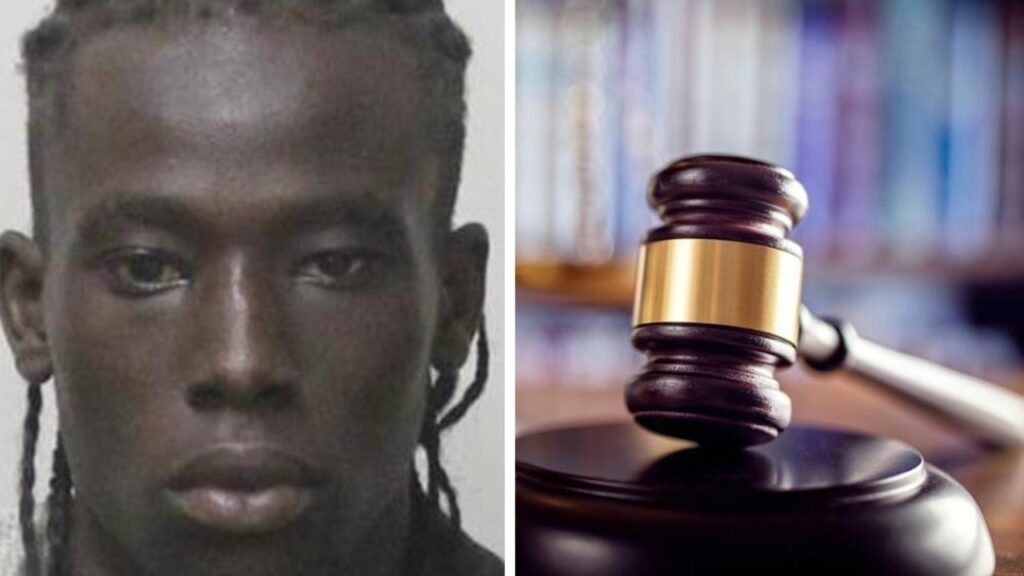The problem with Chris Dawson’s murder charge
Written by admin on May 18, 2024
After three days of back-and-forth arguments, a trio of appeal judges are now deliberating Chris Dawson’s fate.
The appeal hearing was held over three days from Monday to Wednesday this week, with Dawson’s lawyers arguing the former school teacher suffered from a “miscarriage of justice” as it could not be proven that his wife Lynette Simms was not alive after January 8, 1982.
In August 2022, NSW Supreme Court judge Ian Harrison found Dawson had his wife to be with the couple’s teenage babysitter, who was also his student at high school.
Dawson was sentenced to a maximum of 24 years in prison for his wife’s murder with a non-parole period of 18 years.
If his appeal of the charge is successful, his murder charge could be quashed or a retrial could be ordered.
“The judgment is currently reserved and will be handed down at a later date,” a statement from the NSW Court of Criminal Appeals said in a statement.
So how likely is it that Dawson could be set free?
‘Problematic’ language in judgment
On Wednesday during the closing submissions, a top prosecutor argued Chris Dawson’s murder charge should still stand despite “problematic language” used in the 2022 judgment.
The issue with the language – crown prosecutor Brett Hatfield SC pointed out – was that Judge Harrison used Dawson’s lies to come to a “consciousness of guilt” conclusion over the murder.
However, Mr Hatfield urged to the court this did not amount of the prospect of a retrial.
“We can’t get away from the fact that the language [in the judgment] is problematic,” he told the court.
Dawson appeared via AVL from Clarence Correctional Centre on Wednesday wearing prison greens as final submissions were heard at the NSW Court of Criminal Appeal over whether the ex-Newtown Jets player murdered his wife in 1982.
Crown prosecutor Brett Hatfield SC argued that while there were issues with the judgment handed down in August 2022, it did not amount to a “miscarriage of justice”.
Mr Hatfield said while there were issues with NSW Supreme Court Ian Harrison using Dawson’s lies to come to a “consciousness of guilt” conclusion, this did not amount to the prospect of a retrial.
“We can’t get away from the fact that the language [in the judgment] is problematic,” he told the court.
The crown prosecutor also labelled the notion that Ms Simms would have abandoned her home as “glaringly improbable” and said that Dawson used “advantageous lies” to cover up the murder of his wife.
He also said Dawson’s theories that Ms Simms had “gone off with another bloke” or joined a commune in the Blue Mountains were “vague” and used to cover up his crime.
“[Lyn] was the embodiment of the keep calm and carry on motto,” he told the court.
Could Lyn have abandoned the home?
Throughout the appeal hearing, the idea that Ms Simms would have up and abandoned her two young daughters, who were two and four at the time of her disappearance, was highly contested.
Dawson’s lawyer Belinda Rigg SC argued that it was “not inconceivable at all” that Ms Simms would up and leave her children with Dawson and the teenage babysitter, both of whom she had previously “trusted” to take care of the kids.
The point is vital as the murder charge was built upon the notion that Ms Simms would have never left her children behind.
“She was well aware and confident in her husband’s capacity to look after the children,” Ms Rigg told the court.
“Her circumstances were likely to have been exquisitely fragile at the time.”
Justice Christine Adamson batted away this submission on the basis that Ms Simms had struggled to fall pregnant and had her first child seven years after getting married.
“It’s difficult to see … given the focus of Ms [Simms] getting pregnant and her joy at having the children,” she said.
Ms Simms’ body has never been found, and she has never contacted her friends or family, including her two children.
The phone call
Whether the appeal is likely to succeed is also highly dependent on a single phone call that Dawson said Lyn made to him on the afternoon of her disappearance – January 9, 1982.
The former Newtown Jets player claims Lyn called him while working as a part-time lifeguard at Northbridge Baths on Sydney’s north shore.
In the phone call, he claims she told him she needed “time away” from him and the kids.
During the 2022 judgment, Judge Harrison ruled the phone call claim a “lie”.
Ms Rigg told the court that there was a “reasonable possibility based on the evidence” that the call was made and therefore Ms Simms was alive on the afternoon of January 9, 1982.
Judge Harrison ruled “beyond reasonable doubt” that Ms Simm was not alive after Friday, January 8, 1982.
“It’s a crucial issue …. which would result in the acquittal of the applicant,” she said.
Evidence lost in time
Another ground of the appeal the panel is considering is the fact Dawson suffered a “significant forensic disadvantage” owing to the 40 years between his wife’s disappearance and the matter going to trial.
Ms Rigg argued on Monday that “crucial” evidence was lost during that time, which would have assisted Dawson’s case.
She pointed to the fact the trial was unable to call evidence from Sue Butlin, a family friend who said she saw Ms Simms at a roadside fruit brain after her disappearance.
More Coverage
Ms Butlin died in May 1988.
Ms Rigg said her sighting was “quite extraordinary” as she knew Lyn well and contributed to police at the time not charging Dawson.
“That very type of detail … has been lost because of the delay,” she said.







